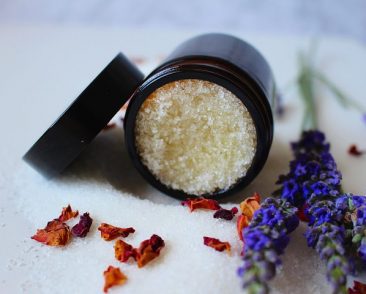While “organic” and “all-natural” might sound similar, they are drastically different. In order to make the claim that your product is organic, the product needs to be certified by the US Department of Agriculture (USDA) as such. The food label “natural,” however, isn’t regulated by either the USDA or the US Food and Drug Administration (FDA). When it comes to product content, that makes a big difference.
According to the USDA, the term “natural” is defined as not containing artificial ingredients or preservatives and including only minimally processed ingredients. But, how can foods, beverages, skincare and beauty products, clothing, and more be both processed for long shelf-life and in a “natural” way? The label “organic,” alternatively, certifies several things for consumers.
[Did you hear? Makeena got a shout-out in Hip2Save! Check it out.]
Here are what the terms really mean and why they are so different.
What Does Organic Mean?
The food label “organic” as certified by the USDA requires that producers only use “natural substances and physical, mechanical, or biologically based farming methods to the fullest extent possible.” In other words, when you purchase something organic you know that it wasn’t subject to genetic engineering, ionizing radiation (often used to improve food shelf life and safety), or sewage sludge (a product of wastewater that’s sometimes used as a fertilizer).
- Produce — In order to be labeled “organic,” produce is required to be grown in soil not tainted by prohibited substances (including most synthetic chemicals) for three years before harvest. Moreover, “organically” grown produce can only involve pesticides that naturally occur in nature, which do exist. For example, Spinosad is a derivative of bacteria that naturally grows in soil. Because it can kill off insects that threaten produce, it’s often used as a natural fertilizer.
- Meat — Similarly, in order to be labeled “organic,” meat requires that the living conditions of raised animals “accommodate their natural behaviors.” This includes being free of antibiotics or hormones and the ability to graze. This is starkly different from the term “free range chicken,” which (because of an absence of a regulated definition) can mean as little as a bird’s cage being opened occasionally.
- Processed Foods — In order to be labeled “organic,” processed foods prohibit artificial preservatives, colors, and flavors, with a few exceptions such as enzymes in yogurt. Products that contain at least 70% organically produced ingredients may be labeled “made with organic [specific ingredient or food group],” according to the USDA.
What Does All-Natural Mean?
In addition to being loosely defined, the product descriptors “all-natural” and “natural” products aren’t formally differentiated. Although “natural” and “all-natural foods” are not regulated, they tend to have similar qualities that consumers often assume to be true.
- Fewer preservatives — Generally speaking, foods that promote themselves as “natural” have fewer preservatives, making them more natural.
- Minimal processing — It is implied that “natural” products are not fundamentally altered.
- Non-GMO — Non-GMO Project Certified is a third-party certification that indicates “that a product was made without genetically engineered ingredients.” Products with “natural” or “all-natural” labels may also wear this certification. This certification, however, does not address related factors such as the use of certain pesticides or fertilizers.
While “natural” food products are not closely regulated by the USDA in a similar fashion to “organic” products, the National Products Association has developed a set of guidelines for personal care products that determine whether they can make a true claim of being “natural.” These guidelines include using mostly if not all-natural ingredients, the absence of any risk to human health, no animal testing utilized, and the use of biodegradable ingredients and packaging.
There Is No One Deciding Health Factor
While certified organic foods make specific guarantees, not every food with this certification is necessarily healthy. For example, there are many varieties of organic snacks, including cookies, cereal bars, and juice, that are certified and labeled as organic. Although they have an organic certification, however, they may still have a high sugar content and should be consumed in moderation.
The bottom line is that there are a lot of products on the market that are promoted as “organic” or “natural,” and thus, healthy. But, no one label will guide consumers to a single “best” product. Rather, the variety of health foods and products on the market require that consumers be well-informed, diligent readers of both ingredients and nutrition facts.
Whether you’re shopping for organics, free-froms, or anything in between, Makeena is here to help you find the products you love no matter where you shop, even online! Learn more and download the app at Makeena.com.




